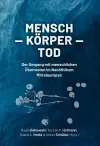
Mensch – Körper – Tod
4 contributors - Hardback
£95.00
Nadia Balkowski works as a scientific consultant at the LVR office for preservation and care of field monuments. As part of a DFG-funded project, she gained her PhD at the University of Cologne with a study on settlement organization, mobility and woodworking of the Linear Pottery Culture site at Arnoldsweiler (in prep.). In 2019 she received a travel grant from the Roman-Germanic Commission of the German Archaeological Institute. In addition to the Archaeology of the Rhineland, she is particularly concerned with the Linear Pottery Culture period and the Neolithic period in Europe in general. Isabel A. Hohle is Scientific Research Member at the Unit of Survey and Excavation Methodology of the Romano-Germanic Commission in Frankfurt/Main. She gained her PhD at the University of Cologne with a comprehensive study on the Linear Pottery Culture settlement with graveyard of Schkeuditz-Altscherbitz (in press). Besides Neolithic Archaeology her research interests are Social Archaeology, Archaeology of Ritual practices and minimal and non-invasive Methods in fieldwork and object analyses. Kerstin P. Hofmann is Director of the Romano-Germanic Commission in Frankfurt/Main. Previously, she was a scholarship holder at the German Archaeological Institute in Rome and worked for the excellence cluster Topoi in Berlin. Her research interest focus on death rituals, space and collective identities and human-thing relations in Europe during the Metal Ages. She is author of Der rituelle Umgang mit dem Tod (2008) and co-editor of several anthologies, e. g. Massendinghaltung in der Archäologie (2016) and Between Memory Sites and Memory Networks (2017). Almut Schülke is professor of Nordic Archaeology at the Museum of Cultural History, University of Oslo. Her research comprises studies on landscape archaeology, human-environment interaction and social space, mobility, ritual and mortuary practices. Her works on the social dimension of mortuary practices include studies on christianization and grave finds (Southwest Germany) and on megalithic tombs in Neolithic Zealand (Denmark), the latter with focus on different modes of burying the dead as well as the social relations between humans and their surroundings as embedded in megalithic tombs, and on Mesolithic burial and mortuary practices in Norway in a Northern European perspective.